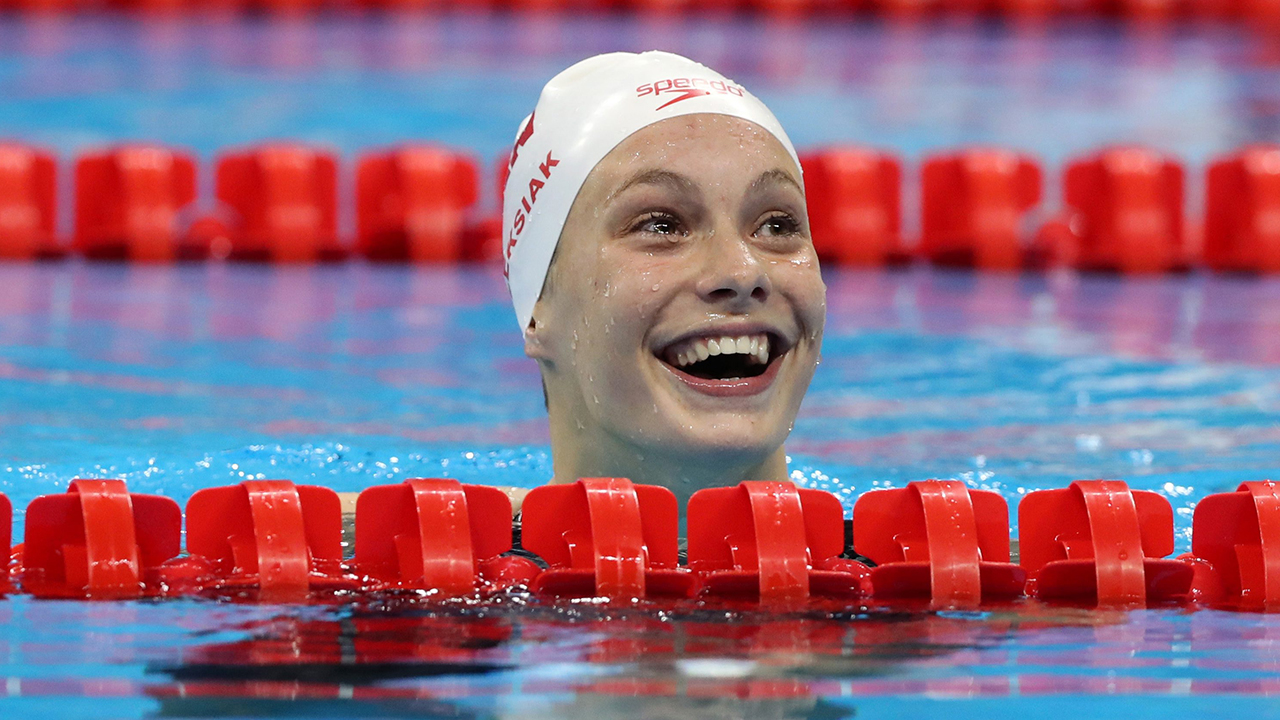CALGARY — Wearable technology designed to help Penny Oleksiak swim even faster was unveiled Thursday at an Own The Podium sport science and technology summit in Calgary.
It looks similar to a Garmin or Fitbit worn on the wrist, but a lot more data is extrapolated, crunched and analyzed from the accelerometer within it.
Yes, "swimlytics" is here.
"Swimlytics is what we call the system because it’s about swimmers, it’s about swimming and it’s data analytics," said Dr. John Barden, a University of Regina associate professor in kinesiology and creator of the technology.
"We’re taking data from the sensor, sending it to a server and we’re doing more processing, more analysis of that data outside the sensor itself."
The technology wasn’t far enough along for Canada’s swim team to make use of it prior to the Summer Games in Rio in August.
Canadian women still produced six medals in the pool. Oleksiak, a 16-year-old from Toronto, won freestyle gold, butterfly silver and swam the anchor legs for a pair of relay bronze.
"Swimming Canada is fully engaged in this project," Own The Podium chief executive officer Anne Merklinger said. "It will be a game-changer for swimming.
"What this helps coaches gather is data. The more data we can give them that is valuable and practical really helps athletes eventually get on the podium."
University of Calgary swimmers Rob Hill of North Vancouver, B.C., and Peter Brothers of Victoria wore the sensors in a workout Thursday.
Barden then took the sensors to a conference room to demonstrate data analysis.
Hill has already worn the sensor half a dozen times in the pool. Data analysis tells him how to make his stroke more powerful and efficient and also when his stroke breaks down during a hard set or session in the pool.
He believes the information has made him faster.
"I’d like to think so. I’d like to think stroke correction is a big deal," Hill said.
Early incarnations of the technology had swimmers wearing several sensors on their bodies. Barden knew the device had to become streamlined and lightweight or the swimmers wouldn’t want to wear it.
"It’s pretty minimal," Brothers observed. "I don’t notice the weight of it or it dragging through the water."
The 20-year-old still wasn’t convinced he would wear it "every single metre of every single day, but integrating it into workouts would not be a bad thing if we can learn a lot from it.
"I know very well that a few tenths (of a second) can make a big difference from making a team and not making a team."
Financing for the project came from Innovations for Gold, formerly known as Top Secret.
It’s Canada’s $2-million sport science and technology program funded half by taxpayers and the other half through corporate sponsorships.
The innovations are often first seen at OTP’s annual tech summit that draws people in high-performance sport from across the country.
Care is taken not to reveal proprietary information that other countries could copy.
"Right now, we’re showing the general application," Merklinger said. "What’s behind the scenes is very sophisticated in terms of how they got to the point of being able to acquire the data and analyze it.
"No one else is doing this and we’ve been pretty sensitive to try and make sure we are only sharing what we can."









